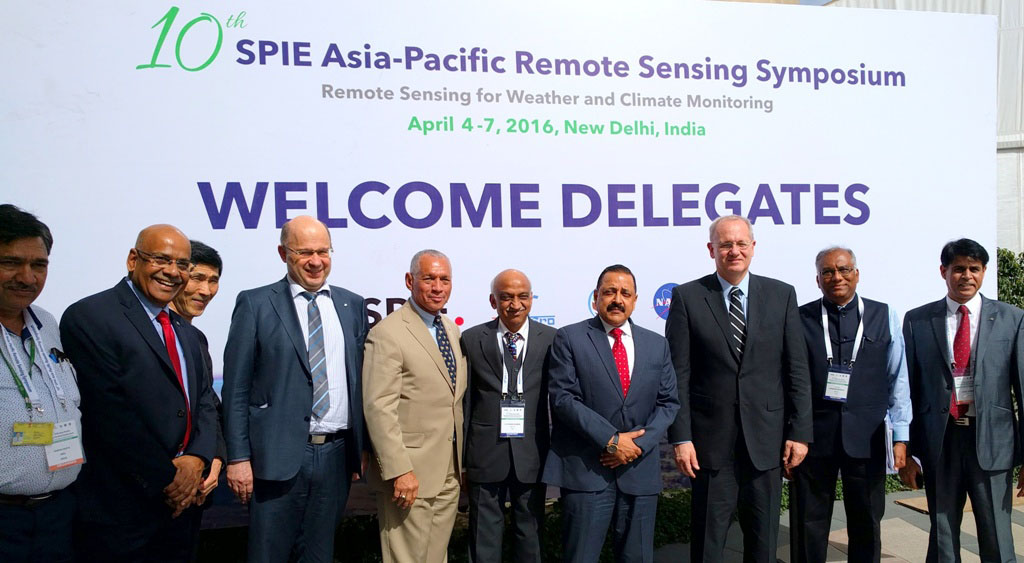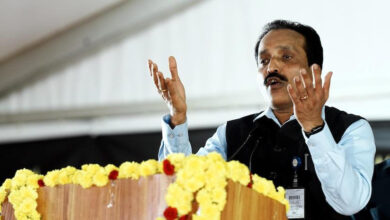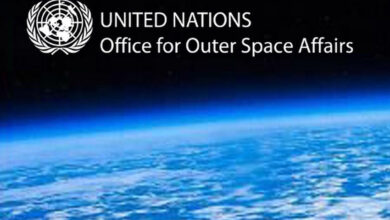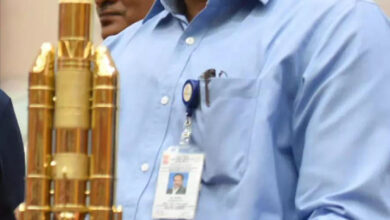Dr Jitendra Singh Inaugurates 10th SPIE Asia Pacific Remote Sensing Symposium

New Delhi. Minister of State Atomic Energy and Space Dr Jitendra Singh inaugurated a 3-day International Conference & Exhibition on Space under the aegis of “Asia Pacific Remote Sensing Symposium†in New Delhi April 4.
Speaking on the occasion, Dr Singh said the experience gained from various Space missions and its benefits have universal application and therefore, coming together of Space Scientists from different leading centres of the world does not only augur well for today’s global world, but would also help in pooling our resources and inputs for a faster progress in the area of Space Technology.
He expressed satisfaction at the fact that the major world centre of National Aeronautics and Space Administration (NASA) is working in close collaboration with Indian Space Research Organisation (ISRO) with the Indian Space Scientists and not only there is an exchange of scientific visits between the two centres from time to time, but many of Indian origin scientists like Sunita Williams have contributed richly to the NASA. At the same time, he also lauded participation of Space Scientists from France, Japan and China.
The MoS said it is a matter of pride that during the last two years of the Modi Government India’s Department of Space and ISRO have been regularly launching foreign satellites from its launching stations at Sriharikota and the collaboration with Space centres across the world has been reinforced due to the personal initiative and interest taken by the Prime Minister which has resulted in signing of a number of MoUs and further exchange of technical knowhow with countries across the world.
At the same time, Dr Jitendra Singh said ISRO is expanding its activities and is now working with as many as 60 Ministries in Government of India and offering its inputs for developing “Smart Citiesâ€, laying of new Railway tracks, construction of roads, assessment of soil and agricultural conditions, etc. He said ISRO portals “Bhuvan†and “MOSDAC†are providing satellite data which is being globally used across the world.
Similarly, images provided by Mangalyan Mission are also being borrowed by other Space Centres in the world, he added.
The ISRO, along with the Ministry of Earth Sciences and the SPIE (the International Society for Optics and Photonics), has been organising the four-day, Asia Pacific Remote Sensing Symposium, 2016 (APRS-2016) beginning April 4. The Indian Society of Remote Sensing (ISRS), which is a professional society of more than 4000 scientists/researchers, is hosting this Symposium. The symposium aims to focus on the applications of remote sensing technologies for disaster mitigation and to better monitoring of global climate change. The deliberations of the symposium will generate new initiatives and collaborative international efforts.
About 100 International participants and 300 National participants were attending the symposium. Many Heads of Space Agency including the Administrator of NASA, President of French National Space Agency (CNES), Vice President of Japan Aerospace Exploration Agency (JAXA), Vice Administrator of China National Space Administration (CNSA), Director General of EUMETSAT and Mexican Space Agency (AEM) were participating in the Symposium.
Today’s symposium consisted of Special Plenary session on “Next Steps in Space Observations – Vision for International Collaboration†with Chiefs of Many Space Agencies as distinguished speakers followed by a Panel discussion on ‘Space, Earth and Humanity’. Another Plenary session on ‘Roadmap to Space based Earth Observations & Applications’ was held with distinguished speakers from India and abroad.
During the symposium, seven parallel conferences distributed in 80 technical sessions and 10 poster sessions and an International Exhibition was to be held. These conferences would be focussing on remote sensing for atmosphere, clouds, and precipitation, land surface and cryosphere, oceans and inland waters, Lidar for environmental monitoring, hyperspectral and ultraspectral technology, techniques and applications, earth observing missions and sensors, modeling of the atmosphere, oceans and interactions, etc. The participants from India and abroad would present their scientific work related to various aspects of remote sensing, the latest developments and applications, discuss cutting-edge technologies, exchange research ideas, and promote international collaboration.
The symposium was preceded by two-day pre-symposium tutorials on ‘Trends and Challenges in Remote Sensing & Geoinformatics’, ‘Satellite Meteorology and Data Assimilation’, ‘Remote Sensing Optical Sensor Calibration and Characterisation’, and ‘Designing the Climate Observing System of the future’.
On this occasion, ISRO Chairman and Secretary, Department of Space AS Kiran Kumar, Major General Charles Frank Bolden, Jr., Administrator, NASA and Mr Jean-Yves Le Gall, President, CNES addressed a press conference, a part of the event.





